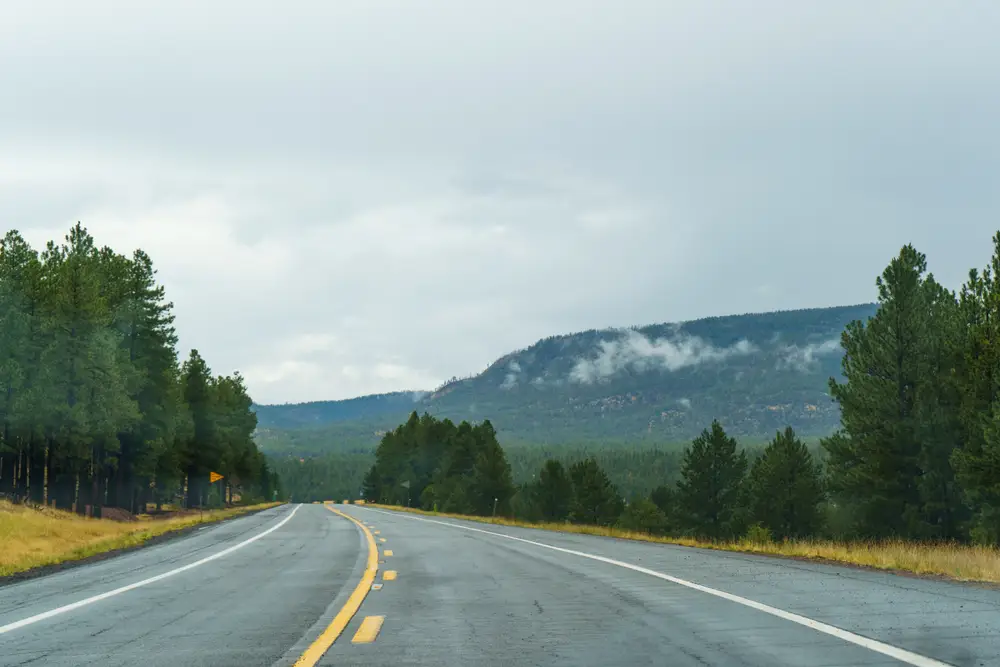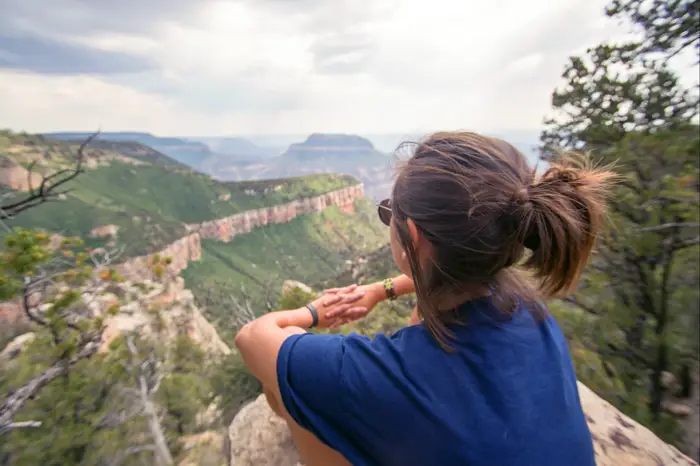I’ve spent 400 hours road-tripping 2,800 miles around the US. These are the biggest mistakes I’ve made.

The author has road-tripped through 30 states around the US and has some regrets.
Road trips can be amazing, awe-inspiring, and annoying.
I’d know — I’ve spent 400 hours traveling 2,800 miles on the road. I’ve passed through 30 states around the Southwest and up the coasts. I’ve traveled from Texas to the Carolinas, New Mexico to Oregon, and twice from Arizona to NYC. I’ve toured the Northeast in a van with my band. I’ve slept in more campsites and parking lots than I can count.
So, what makes an otherwise amazing, awe-inspiring road trip feel annoying? Mistakes. And I’ve had time to make a bunch of them.
These are the six biggest mistakes I’ve made on the road that I’ll avoid in the future.
Bringing my own food on the road saves money and time, but messy ingredients make trips more stressful.

Making food in the car is messy.
In the summer of 2015, I took a two-week-long road trip for the first time. Before heading out for the journey from Austin, Texas, to Napa Valley, California, and back, I headed to the grocery store and loaded up the cart with ingredients for meals I could make in the car — sliced bread, deli meats, cheeses, peanut butter, and jelly. And I couldn’t forget pickles, mayo, tomatoes, and avocados to make the sandwiches more dynamic.
I imagined staying healthy by skipping fast-food joints to lather and stack these ingredients into custom delights.
But it looked better in my head.
Creating sandwiches on the road was stressful, and making a mess was all too easy. My hands shook as I spread mayo in a moving car. And resealing meats and cheeses to be airtight wasn’t as simple as the packages claimed.
By the time I could eat my sandwiches, my hands and parts of the passenger seat were sticky. Since that trip, I have only packed ready-made “meals” for road trips, like protein bars and shakes.
For snacks, I stick to dry items like trail mix that aren’t coated in dusty flavors.
Forgetting to pack my own source of caffeine made my trips more expensive.

A driver sips a to-go coffee on a road trip.
If you’re anything like me, caffeine on a road trip is a must.
However, I’ve taken off for several trips without my own source of energy handy. When this happens, I end up spending an additional $10-$20 per day at coffee shops.
Recently, I’ve avoided additional stops and expenses by packing MiO, a water flavor enhancer with vitamins and caffeine.
Adding caffeine to my water instead of downing a coffee also helps me stay hydrated.
Spending too many hours on the road made trips less enjoyable …

The sun sets over a country road in Texas.
Many of my road trip experiences took place in college, when energy was high and funds were tight.
My friends and I often prioritized covering as much ground as possible with the little bit of cash we had. This meant we spent 12 to 14 hours on the road some days.
Many of these hours were fun, but once the sun went down, so did the energy. Without a view or a sense of place in those later hours, it felt like we could have been driving anywhere.
In my experience, the nighttime road hours feel twice as long as the daylight hours. I would avoid spending more than two hours on the road after dark.
… especially when arriving at campsites after dark.

A campsite outside Zion National Park.
After a long day on the road, the last thing anyone wants to do is pitch a tent — especially in the dark.
In July 2017, I took a two-and-a-half-week road trip to national parks and monuments in Texas, Arizona, Utah, and Colorado.
The budget was extra tight, so we camped or slept in the car every night.
I remember arriving at our campsite outside Zion National Park in Utah. I don’t remember how many hours we’d been on the road, but only the stars lit up the sky when I got out of the car.
I wanted to simply lie down and look up, but I had a shelter to pitch. Assembling a tent in the dark is challenging. Even with the car lights on for help, finding the right pieces to connect was difficult.
I’m not sure how long it took to pitch the tent that night, but I went to bed thinking I wouldn’t put myself in the same situation again.
Avoiding my phone in the car made me miss crucial stops.

Don’t miss crucial road signs.
As a cusp millennial, I love to play the game of not using my phone to find food or rest stops and just relying on signs in the present moment.
Well, I used to love it.
The problem with this game is that I’m not only relying on signs to tell me what’s coming up but also relying on my attention span, which can be shorter than a sentence.
So, how do you lose this game? You miss the sign that says, “This is the last gas station for 100 miles.” I’ve done it more than once, and it sucks. I’ve never gotten stuck, but I’ve gotten close.
My best advice is to find other road games to pass the time and keep your phone handy.
Traveling too fast left me unfulfilled.

The author looks over the North Rim of the Grand Canyon.
When road-tripping from Austin, where I lived in college, the first and last days of a trip will likely just be getting in and out of Texas — Austin is in the middle of the gigantic state.
Because of this, my road trips in college were rushed. I’d travel as far as Oregon and visit as many as six national parks in less than three weeks.
I’m grateful that I’ve been able to experience so many different natural landscapes and environments around the US, but I don’t feel like I’ve spent enough time in any of them to truly take in each setting.
Now, as an adult, I embrace slow travel.
When I take a road trip unrelated to work, I pick one or two places and stay awhile.





